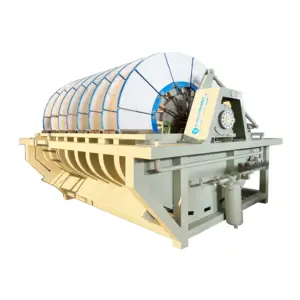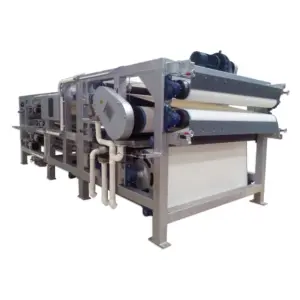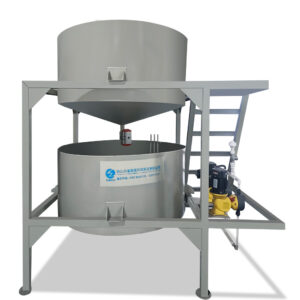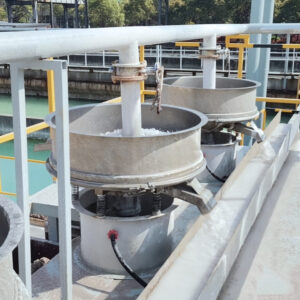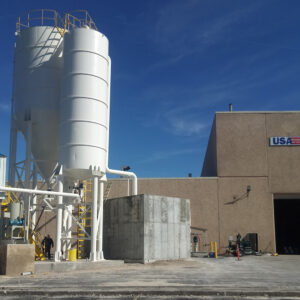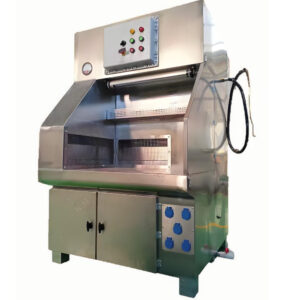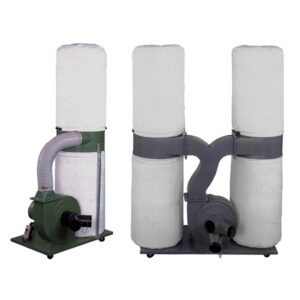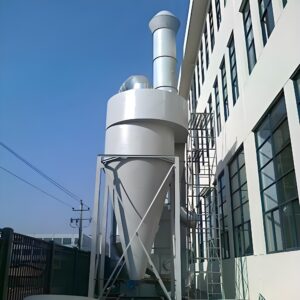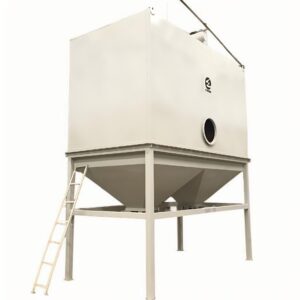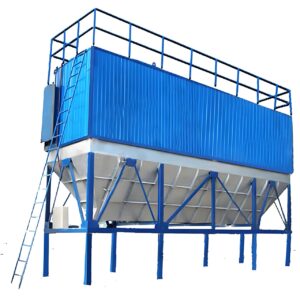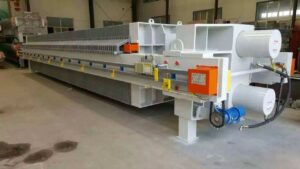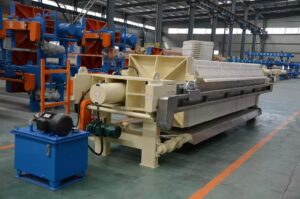Understanding wastewater treatment prices represents one of the most critical challenges facing municipalities, industrial facilities, and environmental managers today. With global water scarcity affecting over 2 billion people and regulatory requirements tightening worldwide, the pressure to implement effective treatment solutions has never been higher. However, the complexity of pricing structures, technology options, and long-term operational costs often leaves decision-makers struggling to develop accurate budgets and realistic implementation timelines.
The consequences of inadequate cost planning extend far beyond budget overruns. Facilities that underestimate true treatment costs face potential regulatory violations, operational shutdowns, and substantial penalty fees that can exceed millions of dollars. Recent industry data shows that 40% of wastewater treatment projects experience cost overruns of 25% or more, primarily due to incomplete initial assessments and hidden operational expenses that emerge during the implementation phase.
This comprehensive analysis provides detailed insights into wastewater system pricing structures, equipment cost breakdowns, and strategic approaches to optimize your treatment investment. We’ll examine real-world cost scenarios across different industries, reveal often-overlooked expense categories, and present proven methodologies for accurate cost estimation that leading facilities use to maximize their return on investment.
What Are the Key Factors Affecting Wastewater Treatment Prices?
The foundation of accurate cost estimation lies in understanding the primary variables that drive treatment system pricing. These factors interact in complex ways, creating significant cost variations even among seemingly similar projects.
System Scale and Processing Capacity
Processing capacity represents the most fundamental cost driver in wastewater treatment investments. Municipal systems typically range from $1,500 to $8,000 per cubic meter of daily processing capacity, while industrial applications can vary from $2,000 to $15,000 per cubic meter depending on contaminant complexity.
Economies of scale play a crucial role in unit cost calculations. Large-scale facilities processing over 50,000 cubic meters daily often achieve unit costs 30-40% lower than smaller installations due to shared infrastructure, bulk equipment purchasing, and optimized operational efficiency. However, this advantage diminishes when considering the total capital investment required and the complexity of project management for large-scale implementations.
In our experience working with diverse facility sizes, the “sweet spot” for cost optimization often occurs in the 5,000-20,000 cubic meter daily capacity range, where facilities achieve reasonable economies of scale while maintaining manageable project complexity and operational flexibility.
Technology Selection and Complexity
Technology choices fundamentally impact both initial investment and long-term operational costs. Conventional activated sludge systems typically require initial investments of $800-2,500 per cubic meter of capacity, while advanced membrane bioreactor (MBR) technologies range from $1,500-4,000 per cubic meter.
| Technology Type | Initial Cost Range ($/m³) | Energy Consumption (kWh/m³) | Maintenance Requirements |
|---|---|---|---|
| Conventional Activated Sludge | $800-2,500 | 0.3-0.6 | Moderate |
| Extended Aeration | $1,000-3,000 | 0.5-0.8 | Low |
| Membrane Bioreactor | $1,500-4,000 | 0.8-1.5 | High |
| Advanced Oxidation | $2,000-6,000 | 1.2-2.5 | Very High |
The selection between simpler and more advanced technologies requires careful consideration of total cost of ownership. While advanced systems often demonstrate superior effluent quality and smaller footprints, their higher energy consumption and specialized maintenance requirements can result in operational costs 50-100% higher than conventional alternatives.
Regulatory Requirements and Standards
Discharge standards directly influence technology selection and associated costs. Facilities meeting basic secondary treatment standards (BOD <30 mg/L, TSS <30 mg/L) typically require investments 20-30% lower than those achieving advanced treatment standards (BOD <10 mg/L, TSS <10 mg/L, nitrogen removal).
Recent regulatory trends toward stricter nutrient removal requirements have significantly impacted project costs. Biological nutrient removal systems add approximately $500-1,500 per cubic meter to project costs, while advanced chemical precipitation systems can increase investments by $800-2,000 per cubic meter.
How Much Do Different Types of Wastewater Treatment Systems Cost?
Understanding cost ranges across different system types provides essential context for project planning and budget development. These ranges reflect current market conditions and typical project specifications.
Municipal Treatment Plant Investments
Municipal wastewater treatment facilities represent the largest category of treatment investments, with costs varying significantly based on population served and treatment requirements. Small communities (5,000-15,000 population) typically invest $3-8 million for complete treatment systems, while large urban facilities can require investments exceeding $500 million.
A recent case study from a mid-sized municipal facility serving 45,000 residents demonstrated typical project economics. The facility invested $28 million in a new treatment plant with advanced biological nutrient removal, achieving per-capita costs of approximately $620. This investment included primary treatment, secondary biological treatment, nutrient removal, and disinfection systems with a design capacity of 18,000 cubic meters per day.
The project achieved operational costs of $0.45 per cubic meter treated, including energy, chemicals, labor, and maintenance. These operational costs aligned closely with industry benchmarks for similar-sized facilities, demonstrating the importance of proper technology selection and design optimization.
Industrial Wastewater Processing Costs
Industrial facilities face unique challenges due to specialized contaminants and varying discharge requirements. Advanced treatment systems for industrial applications typically range from $2,000-15,000 per cubic meter of daily processing capacity, with costs heavily influenced by contaminant types and concentrations.
Chemical manufacturing facilities often require the highest treatment investments due to toxic compounds and complex treatment sequences. A pharmaceutical manufacturing facility recently implemented a comprehensive treatment system at $12,000 per cubic meter of capacity, including chemical precipitation, biological treatment, and advanced oxidation for pharmaceutical residue removal.
Food processing facilities generally achieve lower unit costs due to biodegradable waste streams that respond well to biological treatment. Typical investments range from $2,500-6,000 per cubic meter of capacity, with dairy and meat processing facilities at the higher end due to high organic loads and specialized grease removal requirements.
Decentralized Treatment Solutions
Decentralized treatment systems offer cost-effective solutions for smaller facilities and remote locations. Package treatment plants serving 100-2,000 cubic meters daily typically cost $1,200-4,500 per cubic meter of capacity, including equipment, installation, and commissioning.
These systems provide several advantages for appropriate applications, including reduced infrastructure requirements, faster implementation timelines, and lower total project costs. However, they often require higher per-unit operational costs due to reduced economies of scale and increased maintenance requirements per cubic meter processed.
What Components Drive Wastewater System Pricing Breakdown?
Understanding individual cost components enables more accurate budgeting and identifies opportunities for cost optimization during project planning and implementation phases.
Equipment and Infrastructure Costs
Equipment costs typically represent 35-50% of total project investment, with significant variation based on technology selection and project complexity. Primary treatment equipment (screens, grit removal, primary clarifiers) generally accounts for 15-25% of total equipment costs, while secondary biological treatment systems represent 40-60% of equipment investments.
| Equipment Category | Percentage of Total Equipment Cost | Typical Cost Range ($/m³ capacity) |
|---|---|---|
| Primary Treatment | 15-25% | $200-600 |
| Secondary Treatment | 40-60% | $800-2,400 |
| Nutrient Removal | 10-20% | $300-800 |
| Disinfection | 5-10% | $100-300 |
| Sludge Processing | 15-25% | $400-1,200 |
Advanced treatment technologies command premium pricing due to specialized materials, complex control systems, and limited supplier competition. Membrane systems, for example, typically cost 60-100% more than conventional alternatives but offer superior effluent quality and smaller footprints that can offset higher equipment costs through reduced land requirements and construction costs.
Installation and Construction Expenses
Construction and installation costs typically represent 30-45% of total project investment, with site-specific factors creating significant cost variations. Greenfield installations generally achieve lower construction costs compared to retrofit projects due to improved access, reduced utility conflicts, and streamlined construction sequencing.
Site preparation, excavation, and concrete work represent the largest construction cost components, typically accounting for 50-65% of total construction expenses. Electrical and instrumentation installation adds another 20-30% to construction costs, while mechanical equipment installation represents 15-25% of construction investment.
Specialized construction requirements can significantly impact project costs. Rock excavation can increase construction costs by 25-40% compared to typical soil conditions, while dewatering requirements in high groundwater areas can add 10-20% to project costs.
Operational and Maintenance Investments
Long-term operational costs often exceed initial capital investments over typical 20-year system lifespans. Annual operational costs typically range from 8-15% of initial capital investment, with energy representing the largest operational expense category at 30-50% of total operational costs.
Labor costs vary significantly based on system complexity and automation levels. Conventional treatment systems typically require 0.5-1.5 full-time equivalent operators per 10,000 cubic meters of daily capacity, while advanced treatment systems may require 1.5-3.0 operators for similar capacity due to increased complexity and monitoring requirements.
Chemical costs represent another significant operational expense, typically accounting for 15-25% of total operational costs. Biological treatment systems generally require lower chemical inputs compared to chemical precipitation systems, but may require specialized nutrients and pH adjustment chemicals that increase operational complexity and costs.
How Do Industrial Wastewater Cost Estimations Compare Across Sectors?
Industry-specific wastewater characteristics create distinct cost patterns that facility managers must understand for accurate budget development and technology selection.
Manufacturing and Chemical Industries
Chemical manufacturing facilities face the highest treatment costs due to toxic compounds, variable waste streams, and strict discharge requirements. Treatment costs typically range from $4-12 per cubic meter processed, with specialty chemical manufacturers at the higher end due to complex treatment sequences and specialized equipment requirements.
A recent petrochemical facility implementation demonstrated typical cost structures for this sector. The facility invested $45 million in a comprehensive treatment system processing 15,000 cubic meters daily, achieving unit costs of $3,000 per cubic meter of capacity. The system included oil-water separation, biological treatment, advanced oxidation, and metals removal to meet strict discharge standards.
Operational costs for this facility averaged $8.50 per cubic meter treated, including energy ($2.80), chemicals ($2.20), labor ($1.80), and maintenance ($1.70). These costs reflected the complexity of multi-stage treatment required for chemical manufacturing wastewaters and the specialized expertise required for system operation.
Food and Beverage Processing
Food processing facilities generally achieve lower treatment costs due to biodegradable waste streams that respond well to biological treatment. However, high organic loads and specialized pretreatment requirements can increase costs compared to municipal treatment standards.
Dairy processing facilities typically require investments of $2,500-5,000 per cubic meter of treatment capacity, with higher costs driven by fat, oil, and grease removal requirements. Specialized treatment systems for dairy applications often include dissolved air flotation, anaerobic pretreatment, and extended aeration systems to handle high organic loads effectively.
Brewery wastewater treatment represents another significant food processing category, with typical investment costs of $1,800-4,000 per cubic meter of capacity. The relatively consistent waste characteristics and high biodegradability of brewery wastewaters enable efficient biological treatment, though pH adjustment and nutrient balancing add operational complexity and costs.
Pharmaceutical and Biotechnology
Pharmaceutical manufacturing creates unique treatment challenges due to antibiotic residues, complex organic compounds, and variable waste stream characteristics. Treatment costs typically range from $6-15 per cubic meter processed, with biotechnology facilities at the higher end due to specialized sterilization and containment requirements.
Advanced treatment technologies are often required for pharmaceutical wastewaters, including membrane bioreactors, advanced oxidation, and specialized chemical precipitation systems. These technologies increase both capital and operational costs but are essential for meeting discharge standards and preventing environmental contamination.
A biotechnology facility recently implemented a comprehensive treatment system at $8,500 per cubic meter of capacity, including biological treatment, membrane filtration, and ozonation for pharmaceutical residue destruction. Operational costs averaged $11.20 per cubic meter, reflecting the high energy requirements of advanced treatment technologies and specialized monitoring requirements.
What Are the Hidden Costs in Effluent Treatment Investment Planning?
Beyond obvious equipment and construction costs, numerous hidden expenses can significantly impact total project costs and long-term operational viability.
Permit and Compliance Expenses
Regulatory compliance costs often represent 5-15% of total project investment but are frequently underestimated during initial project planning. Environmental impact assessments, permit applications, and regulatory review processes can require 6-18 months and cost $50,000-500,000 for major projects.
Ongoing compliance monitoring adds substantial operational costs, typically requiring $20,000-100,000 annually for comprehensive monitoring programs. Laboratory analysis, reporting systems, and regulatory consulting services contribute to these costs, with advanced treatment facilities requiring more extensive monitoring due to complex discharge parameters.
In our experience, facilities that invest in comprehensive compliance management systems early in project development achieve better long-term cost control and reduced risk of regulatory violations that can result in substantial penalties and operational disruptions.
Energy Consumption and Utility Costs
Energy costs represent the largest operational expense for most treatment facilities, typically accounting for 30-50% of total operational costs. However, energy price volatility creates significant uncertainty in long-term cost projections, with electricity costs varying by 40-80% across different regions and utility providers.
Treatment process selection significantly impacts energy consumption patterns. Conventional activated sludge systems typically consume 0.3-0.6 kWh per cubic meter treated, while advanced membrane systems can require 0.8-1.5 kWh per cubic meter. These differences translate to substantial cost variations over system lifespans.
| Treatment Process | Energy Consumption (kWh/m³) | Annual Energy Cost ($/m³)* |
|---|---|---|
| Conventional Activated Sludge | 0.3-0.6 | $0.04-0.08 |
| Extended Aeration | 0.5-0.8 | $0.07-0.11 |
| Membrane Bioreactor | 0.8-1.5 | $0.11-0.21 |
| Advanced Oxidation | 1.2-2.5 | $0.17-0.35 |
*Based on average industrial electricity rate of $0.14/kWh
Waste Disposal and By-product Management
Sludge disposal costs represent a significant hidden expense that facility managers often underestimate. Disposal costs typically range from $150-600 per dry ton of sludge, with hazardous waste classification increasing costs to $800-2,000 per dry ton.
Sludge production varies significantly based on treatment process selection and waste characteristics. Conventional treatment produces 0.3-0.8 kg of dry sludge per cubic meter treated, while advanced treatment systems with chemical precipitation can produce 0.8-2.0 kg per cubic meter.
Long-term sludge management strategies require careful consideration of disposal cost trends, regulatory changes, and beneficial reuse opportunities. Facilities that develop comprehensive sludge management plans during initial project planning achieve better cost control and reduced operational risks.
How Can Organizations Optimize Their Wastewater Processing Prices?
Strategic approaches to cost optimization can significantly reduce both initial investment and long-term operational expenses while maintaining compliance and operational reliability.
Technology Selection Strategies
Proper technology selection provides the foundation for cost optimization, requiring careful analysis of total cost of ownership rather than initial capital cost alone. Life-cycle cost analysis should include capital costs, operational expenses, maintenance requirements, and end-of-life replacement costs over typical 20-year system lifespans.
Modular design approaches enable phased implementation that reduces initial capital requirements and allows for capacity expansion as facility needs grow. This strategy proves particularly valuable for industrial facilities with uncertain future production levels or changing product mixes that affect wastewater characteristics.
Technology standardization across multiple facilities can achieve significant cost savings through bulk purchasing, standardized maintenance procedures, and shared technical expertise. Multi-facility organizations often achieve 10-25% cost reductions through coordinated technology selection and procurement strategies.
Phased Implementation Approaches
Phased implementation strategies enable organizations to spread capital investments over multiple years while achieving immediate compliance and operational improvements. This approach proves particularly valuable for major facility upgrades or expansion projects that require substantial capital investments.
A successful phased implementation typically begins with critical compliance components, followed by capacity expansion and efficiency improvements in subsequent phases. This strategy reduces financial risk and allows organizations to optimize later phases based on operational experience from initial implementations.
Public-private partnerships offer another approach to optimize project costs and risk allocation. These arrangements can reduce upfront capital requirements while leveraging private sector expertise in design, construction, and operation of treatment facilities.
Long-term Cost Management
Predictive maintenance programs can reduce operational costs by 15-25% compared to reactive maintenance approaches. These programs utilize advanced monitoring systems and data analytics to optimize maintenance scheduling and prevent costly equipment failures.
Energy management represents the greatest opportunity for long-term cost optimization. Advanced treatment systems with energy recovery capabilities can achieve net energy production in some applications, completely eliminating energy costs while generating revenue through excess energy sales.
Water reuse and resource recovery initiatives provide additional cost optimization opportunities. Facilities that implement comprehensive resource recovery programs often achieve operational cost reductions of 20-40% through reduced chemical consumption, energy generation, and water reuse credits.
Conclusion
Understanding wastewater treatment prices requires comprehensive analysis of multiple cost components, technology options, and long-term operational considerations. The key insights from this analysis demonstrate that successful cost optimization depends on accurate initial assessment, appropriate technology selection, and strategic implementation approaches that balance capital investment with operational efficiency.
The most successful treatment facility investments share common characteristics: thorough upfront planning, realistic cost assessment including hidden expenses, and technology selection based on total cost of ownership rather than initial capital cost alone. Organizations that implement these principles typically achieve 15-30% lower total costs compared to those focusing solely on initial investment minimization.
Future trends toward stricter environmental regulations and resource recovery requirements will continue to influence treatment technology selection and associated costs. Facilities that proactively invest in advanced treatment capabilities and resource recovery systems position themselves for better long-term cost management and regulatory compliance.
As you develop your wastewater treatment investment strategy, consider conducting comprehensive feasibility studies that examine multiple technology options, implementation approaches, and financing alternatives. The complexity of modern treatment requirements demands expert guidance to navigate the numerous technical and financial considerations that determine project success.
For organizations ready to move forward with treatment system investments, comprehensive treatment solutions are available that integrate proven technologies with strategic cost optimization approaches. What specific challenges does your facility face in developing accurate treatment cost estimates, and how might these insights inform your next steps in treatment system planning?
Frequently Asked Questions
Q: What factors mainly influence wastewater treatment prices?
A: Wastewater treatment prices are influenced by several key factors including the size and capacity of the plant, the treatment technology used, location, labor and material costs, and regulatory compliance requirements. Larger plants with higher flow rates tend to cost more due to increased infrastructure complexity. Additionally, site-specific challenges, land costs, and system automation levels affect the overall investment breakdown.
Q: How is the investment in a wastewater treatment plant typically broken down?
A: The investment breakdown for wastewater treatment includes:
- Capital Costs: Land acquisition, construction, equipment purchase (pumps, aeration systems, etc.), and professional design and permitting services.
- Operational Costs: Ongoing expenses such as labor, energy, maintenance, and chemicals.
- Regulatory Compliance Costs: Expenses related to meeting environmental standards and permits.
- Financing Costs: Interest and fees associated with funding the project.
This structured breakdown helps stakeholders understand both upfront and recurring expenses.
Q: Why does the location impact wastewater treatment prices so significantly?
A: Location affects wastewater treatment prices because land costs vary widely by region, with urban areas typically being more expensive. Additionally, local labor rates, availability of materials, and site-specific conditions can lead to increases in construction and operational expenses. For example, remote or challenging sites may require specialized equipment or infrastructure, raising costs.
Q: What role does technology choice play in determining wastewater treatment costs?
A: Technology selection greatly impacts wastewater treatment prices. Conventional systems like activated sludge processes may have lower initial costs but higher operational needs, while advanced technologies like membrane bioreactors involve higher capital investment but can offer greater efficiency and automation. Choosing the appropriate technology depends on treatment goals, budget constraints, and long-term operational considerations.
Q: How can municipalities manage or reduce the costs when investing in wastewater treatment facilities?
A: Municipalities can manage wastewater treatment prices by:
- Carefully planning and assessing site-specific challenges early.
- Opting for space-efficient and scalable technologies.
- Partnering with experienced engineering consultants for cost-effective design and construction.
- Exploring funding options, grants, or subsidies to offset investment.
- Considering automation levels to balance operator needs and cost savings.
These strategies help optimize the investment breakdown and improve affordability.
Q: What is a typical cost estimate for constructing a wastewater treatment plant?
A: A rough estimate for constructing a wastewater treatment plant is around $12 million per million gallons per day (MGD) of average flow capacity. Peak flow rates might be considered at about $5 million per MGD. However, actual costs vary based on plant size, technology, location, and community size, so detailed site-specific assessments are critical for precise budgeting.
External Resources
Calculating wastewater treatment plant construction costs – Blog – Provides in-depth analysis of construction costs for wastewater treatment plants, outlining key factors such as location, plant capacity, and flow rates that influence total investment.
How Much Does A Wastewater Treatment Plant Cost – Breaks down capital (CAPEX) and operational (OPEX) costs for building and maintaining wastewater treatment plants, including land, equipment, staffing, and energy expenses.
How Much Does a Wastewater Treatment System Cost? – SSI Aeration – Details the variables impacting wastewater treatment system pricing, such as pollutants, equipment selection, planning, installation, and automation.
Understanding Wastewater Treatment Plant Costs: A Complete Budget Guide – Offers a comprehensive budget guide for wastewater treatment plants, emphasizing capital cost components and strategies for more efficient financial planning.
How Much Does a Wastewater Treatment System Cost? – Examines equipment costs based on plant capacity and contaminant levels, alongside design, engineering, and regulatory cost factors for wastewater treatment projects.
Wastewater Treatment and Water Reclamation – U.S. EPA – Provides authoritative information from the U.S. Environmental Protection Agency on the investment, planning, and technology considerations for municipal wastewater treatment and reuse.
